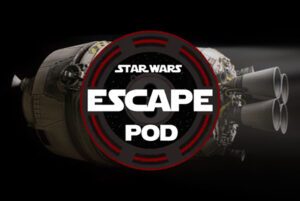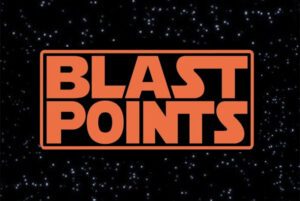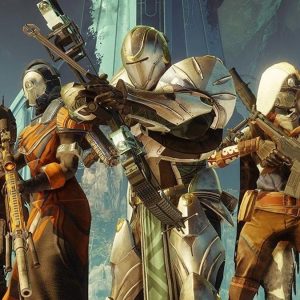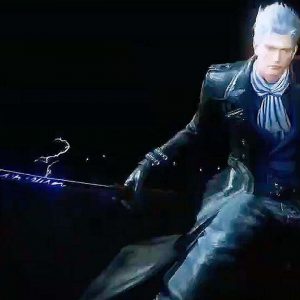[ad_1]
Check out Stadia’s price, release window, technical specifications and more.
During the pre-E3 2019 Google Stadia Connect event, Google revealed more information about the streaming platform’s release window, requirements, price and more – but Google has also revealed a lot about Stadia in the past.
We’ve collected all of that information to tell you everything we know about Google Stadia.
Google Stadia Release Date Window
Google Stadia doesn’t have a set release date, but we do know that it’s set to arrive in November 2019.
The only way to access Stadia at launch is by purchasing the Google Stadia Founder’s Edition, which includes a limited-edition Night Blue Google Stadia Controller, a Chromecast Ultra, a three month Stadia Pro subscription, and a 3-month Buddy Pass to give to a friend.
Stadia will be available this year in the U.S., Canada, U.K., Ireland, France, Germany, Italy, Spain, Netherlands, Belgium, Denmark, Sweden, Norway, and Finland. Google plans to add more regions in 2020.
Google Stadia Price
The Google Stadia Founder’s Edition costs $129.99 (which includes a Chromecast Ultra that runs for $69.99 on its on) but this will only last users three months with the included subscription. Additional Google Stadia Controllers will cost $69 on their own.
Beyond that, Google is offering the Stadia Pro subscription for $9.99 a month, which gives players access to the cloud gaming service, free games, and the ability to play games at up to 4K/60 fps/HDR with 5.1 surround sound – given the user has fast enough internet speed to run it.
Stadia Base, which isn’t coming until 2020 and won’t give gamers these extra goodies, will be available to consumers for free given they have the equipment necessary to play its games (see below).
Google Stadia Pro vs. Google Stadia Base
The aforementioned Google Stadia Pro, which costs $9.99 a month, will let users gain unique perks through a monthly subscription. Base, on the other hand, is just that: basic.
Google Stadia Base:
- Free to access basic Google Stadia services
- Purchase games through the Google Store
- Max resolution 1080p/60fps/Stereo (20-35mpbs)
Google Stadia Pro:
- $9.99 a month
- All Stadia Base benefits
- Stream in up to 4K/60fps/HDR with 5.1 Surround Sound (35mbps)
- Access to select free games (as long as the subscription service is active)
- Exclusive discounts on games
- Limited time access to Destiny 2 and its expansions
Google Stadia Internet Speed Requirements
During today’s presentation, Google provided a chart that shows the range of resolutions and internet speeds Stadia will support, which can be seen below.
The general required internet speeds for Google Stadia are as follows:
- 10Mbps – 720p, 60 fps, Stereo
- 20Mbps – 1080p, 60 fps, 5.1 Surround Sound
- 35Mbps – 4K, 60 fps, 5.1 Surround Sound
The recommended minimum starts at 10Mbps, which should give users 720p resolution at 60fps and basic stereo. Around 20Mbps, users can reach 1080p resolution at 60 fps and 5.1 surround sound. The best quality users can get out of Stadia Pro will be with an internet connection at 35 Mbps, which will give users 4K resolution at 60fps, and 5.1 surround sound. Stadia intends to support 8K resolution in the future.

Google Stadia Hardware Requirements
Since Google Stadia is a streaming service, users won’t need a decked-out PC to run games at high settings. They will, however, need the above-mentioned internet speeds, a compatible controller, and one of the following supported devices:
- Desktop Computer or Laptop (via Chrome browser)
- Mac – Requires macOS X 10.9 and higher
- PC – Requires Windows 7 and higher
- TV – Requires Google Chromecast, HDMI Port
- Tablet – Requires Google Chrome
- Phone – Google Pixel 3, Google Pixel 3a Supported at Launch with plans to expand to other phones over time)
Google Stadia Technical Specifications
During Google Stadia’s March 2019 reveal event, Google revealed Stadia’s technical specifications for the cloud servers that run these games remotely.
At launch, Google Stadia will use:
- A custom 2.7 GHz hyperthreaded x86 CPU with AVX 2 SIMD
- A custom AMD GPU capable of 10.7 teraflops
- 16GB of RAM with up to 484GB/s transfer speeds
- SSD cloud storage.
Google Stadia features a custom 2.7 GHz hyperthreaded x86 CPU with AVX 2 SIMD. It also boasts a custom AMD GPU that’s capable of 10.7 teraflops of power using HBM2 memory and 56 compute units. For memory, it has 16GB of RAM with up to 484GB/s transfer speeds and 9.5MB of L2+L3 cache. On top of all of this, it includes SSD cloud storage.
You can see how Google Stadia’s launch specs compare to PS4 Pro and Xbox One, and how they compare to what we know about the PS5 and Project Scarlet’s specs. Expect Google to improve these Stadia specs as time goes on.

Google Stadia Controller
The Google Stadia Founder’s Edition includes a limited-edition Night Blue Google Stadia Controller, but customers can also purchase additional controllers for $69 a pop. These will initially come in three colors: Just Black, Clearly White, and Wasabi. We didn’t play games with it, but we did get to go hands-on with Google Stadia’s controller earlier this year.
The Stadia controller features a capture button, a Google Assistant button, standard face buttons and parallel control sticks, a 3.5mm headset jack, a USB-C port to charge its internal Li-lon battery and facilitate wired gameplay and accessories.
While the Stadia Controller will likely be the best way to play Stadia games, it isn’t the only way: HID class USB controllers are also compatible with the service, but won’t include all of the bells and whistles the Stadia Controller offers.
Google Stadia Games
At this point, Google has announced over 20 publisher and developer partners who plan on bringing their games to Stadia. The launch-window games coming to Stadia include (with currently unreleased games in bold):
- Assassin’s Creed Odyssey
- Baldur’s Gate 3
- Borderlands 3
- Darksiders Genesis
- Destiny 2
- Doom 2016
- Doom Eternal
- Dragon Ball Xenoverse 2
- Farming Simulator 19
- Final Fantasy XV
- Football Manager
- Get Packed
- GRID
- Gylt
- Just Dance
- Metro Exodus
- Mortal Kombat 11
- NBA 2K
- Power Rangers: Battle for the Grid
- Rage 2
- Samurai Shodown
- The Elder Scrolls Online
- Thumper
- Tomb Raider Definitive Edition
- Shadow of the Tomb Raider
- Rise of the Tomb Raider
- Tom Clancy’s Ghost Recon Breakpoint
- Tom Clancy’s The Division 2
- Trials Rising
- The Crew 2
- Wolfenstein: Youngblood
The confirmed publishers bringing games to Stadia include:
- Bandai Namco
- Bethesda
- Bungie
- Capcom
- Coatsink
- Codemasters
- Deep Silver
- Drool
- Electronic Arts
- Giants Software
- Larian Studios
- nWay Games
- Rockstar
- Sega
- SNK
- Square Enix
- 2K
- Tequila Works
- Warner Bros
- THQ
- Ubisoft
On top of these, Q-games is working on an untitled game that utilizes Google Stadia game state sharing.
And, for a limited time, Stadia Pro will give players full access to Destiny 2, its previously released add-ons, the new Shadowkeep expansion and an annual pass. Players can even transfer their Destiny 2 Guardian from their PC and Xbox One games.

Google Stadia Gameplay
IGN had the chance to go hands-on with Stadia back in March, where we streamed Assassins Creed Odyssey (essentially the same experience as playing it on Google Stadia’s proof-of-concept Project Stream). With Odyssey, we didn’t notice any input lag, though graphically intense moments like destroying an enemy ship seemed to make the stream dip in quality.
We also played 2016’s Doom on Stadia, which produced a bit more lag than Odyssey. This was most noticeable when using a mouse and keyboard, but also occurred when using a gamepad.
Google Stadia Special Features
Google Stadia will feature game state sharing, which allows players to share specific points in a game with others. This means players can create a save spot in a game, generate a link, and share it with others who can pick up exactly where the initial player left off. The title Q-Games is developing uses game state sharing as a focal point, saying it will “replicate the exact same scenario” for other players.
Google Stadia Announcement
Google Stadia was announced on March 19, 2019. It was at this time we learned how the streaming platform would work, saw its controller, and found out about its technical specifications. Here, Google emphasized that Stadia is meant to be played across a wide variety of devices with few technical requirements getting in the way of playing games.
At this point, we didn’t have a release window, price, a comprehensive list of games, or information on how its subscription structure would work.
Sony and Microsoft React to Stadia
While Stadia executive Phil Harrison has gone on record saying first-party games and studios are “fundamental of being in the game platform business,” we know that the recently revealed Baldur’s Gate 3 won’t be exclusive to Stadia. Harrison also discussed if he sees PlayStation and Xbox as Stadia’s competitors.
To this point, Microsoft’s Xbox division chief marketing officer Mike Nichols argued that Stadia lacks the content necessary to flourish in the industry, saying “Emerging competitors like Google have a cloud infrastructure, a community with YouTube, but they don’t have the content.”
When asked if PS5 will by Sony’s last console due to emerging streaming services like Stadia, President and CEO of Sony’s PlayStation division Jim Ryan said “Who knows how it might evolve? Hybrid models between console and some sort of cloud model? Possibly that. I just don’t know. And if I did know, I wouldn’t tell you.”
In May, Sony and Microsoft signed a memorandum of understanding that established both companies will explore “joint development of future cloud solutions in Microsoft Azure to support their respective game and content-streaming services.” Words from Ryan suggest this memorandum may be in response to emerging competitors like Google Stadia.
Have a tip for us? Want to discuss a possible story? Please send an email to [email protected].
Colin Stevens is a news writer for IGN. Follow him on Twitter.
[ad_2]
Source link
























